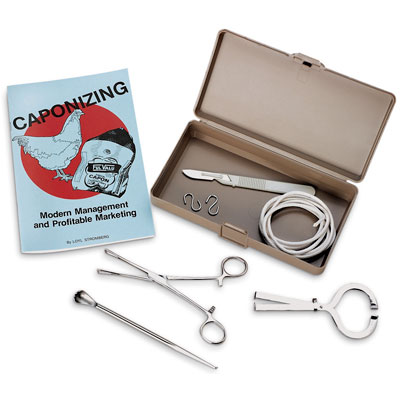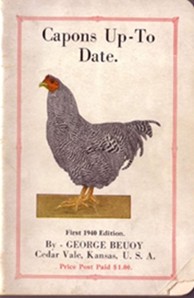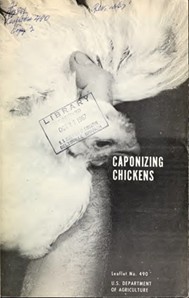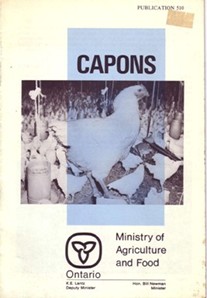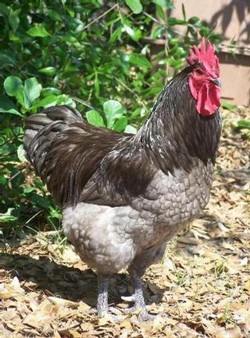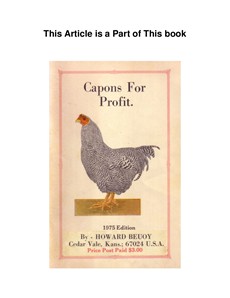|
|
|
Making capons by caponizing young male chickens is becoming a lost art, but it is one with which we have had experience over the years. A capon is a castrated chicken, the equivalent of a steer. It is accomplished by a surgical procedure. Instead of turning into a tough rooster, the capon becomes larger, more flavorful, tender and juicy. Indeed, we prefer a roast capon to turkey. George Beuoy of Kansas was known as the “Capon King”, having promoted the capon as a delicacy, and he sold thousands of capons. He developed, manufactured, and sold the instruments to produce capons for home use. He also published many books, claiming to have sold more than 1,000,000 of them during his lifetime. His books publicized the capon, but also advertised his instruments, and gave instructions for turning cockerels into capons. There was a time when hormonal chemicals were injected into the cockerels with the intent of producing a capon without surgery. By the time that it was discovered that the chemicals were causing cancer, the market for capons was diminished, and the surgery deemed obsolete. Recently one of our friends asked that I teach her to make capons, as chefs at high class restaurants have requested that she supply them with capons. This has renewed my interest in the subject, and I have read through my library of capon publications, and, also, downloaded several that have been digitized from other collections. |
|
During my search for capon information, I was pleased to see a reference to caponizing on a homesteading website. Click here to view that entry. |
|
A current set of capon instruments is offered by NASCO.: Click on the picture to go to Nasco’s order page |
|
|
|
|
|
|
|
|
|
|
I have built this page with the hope that it will stimulate others to make capons, if for no more than their own use. I have always said, and recently, I saw it in print, “Once you have a mouthful of capon, you will never want turkey again!” |
|
And, Yet Another Use for a Capon! Capons make very good brooders, as they will “mother” as many as 20 chicks. George Beuoy’s books devote space to explaining the method of introducing newly hatched chicks to a capon. The introduction is usually done at night, and by morning, the capon had adopted the chicks. He will raise them, caring for them the same as a hen would had she hatched the chicks from her own eggs. |
 |
|
This is a picture of a capon that raised a brood of chicks for Fritz many years ago. |
|
[Home] [Our Chickens] [Capons and Caponizing] [Our Bees and Honey] [Our Cats] [Joyce's Quilting] [Polish Tatra Mountain Sheepdog] [Blessing Israel] [Sausage and Meat Curing] [Our Travels] [Our Estate] [Links] [Contact Information] [Website Building] |

